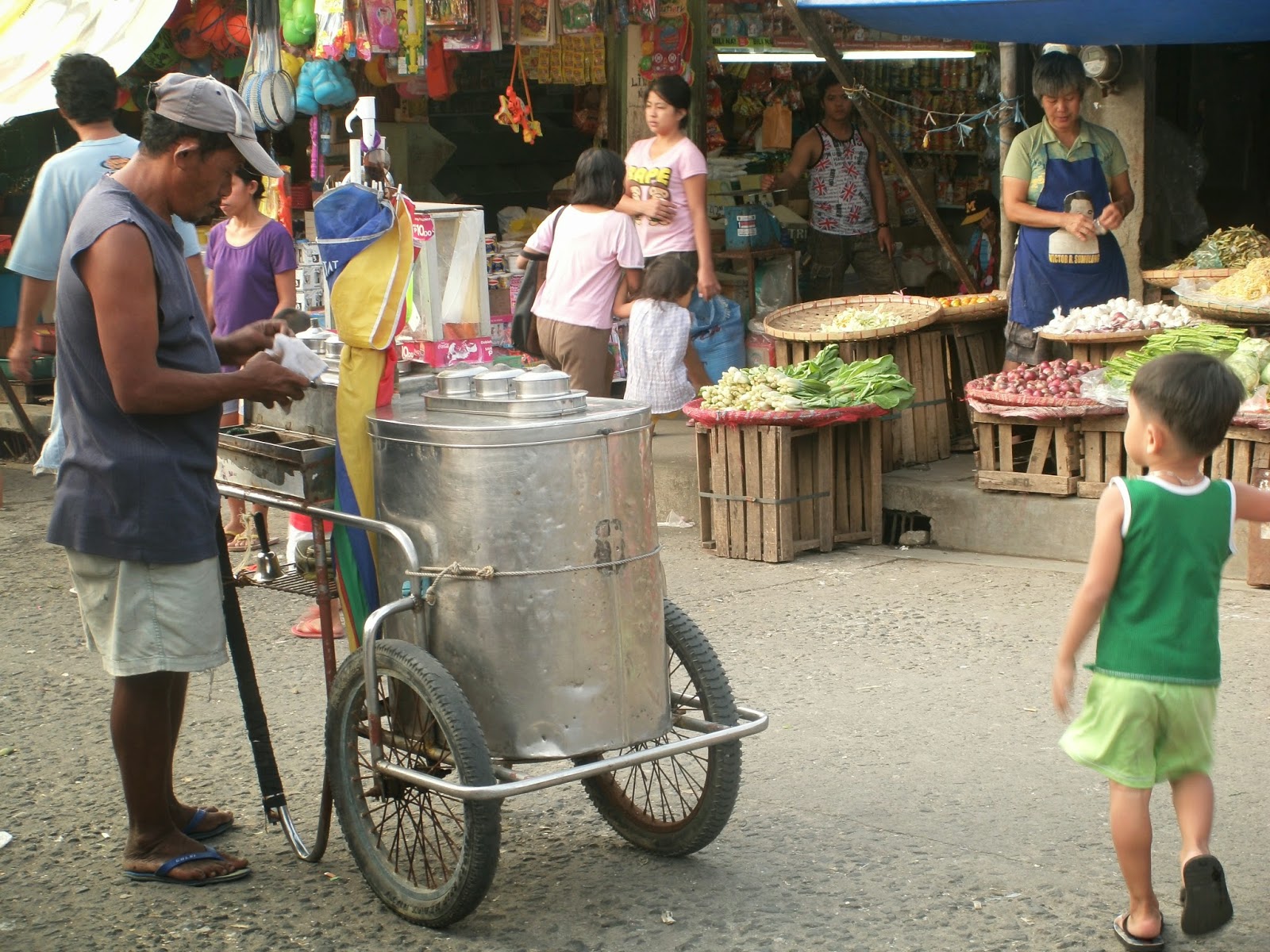Sorbetes; once tasted FOREVER wanted
On a hot, sunny
day, every Filipino hear the sound of the hand held bell among the
streets in the Philippines, indicating that "MamangSorbetero" (or Ice
Cream man) is peddling around the town to offer his sorbetes or dirty ice
cream.
Summer season is
now approaching and the spotlight is on sorbetes- Filipino traditional
variation of ice cream made in the Philippines.
Sorbetes, as the
Filipino ice cream is distinct from the similarly named Sorbet. Sorbetes got its
name of dirty ice cream because it is usually sold along the streets in a
wooden push cart; thus, exposing it to open air. Peddled by street hawkers it
is usually served with small wafer or sugar cone and more recently, bread buns.
It is uniquely made from coconut milk, unlike other ice desserts that are made
from animal milk. Sorbetes really possesses an inextinguishable taste that
whoever can taste it, will experience mouth watering feeling.
Sorbetes is the
most affordable Filipino dessert, perfect for merienda. It has an extremely taste and once you
tasted, forever wanted.It is also considered as such because it is ussually
home-made by the vendors themselves when compared with the commercially-made
ice creams where in quality controls were strictly enforced, the dirty ice
cream with naturally be cheaper in price from P 5.00 to P 15.00 because it uses less milk and more water
in the ingredients.
Way back then Spaniards introduced sorbetes to
Filipinos and only elite persons can afford it but Filipinos insatiable quest
to improve ice cream and to become more affordable for all.
According to my grandmother, during her time,
her grandfather uses carabao milk and egg yolks and store to a wooden drum with
ice and rock salt to maintain cold temperature until ready to be consumed, but
when Americans took over the country commercial ice creams were released and
introduced leaving home-made sorbetes out of the competition.
On this modern era, how did sorbeteros (ice
cream man) compete with the big companies offering world class ice creams?
Mang Carlos Dimaguiba, 45 years old, has been
selling sorbetes along the streets of Antipolo City for almost 25 years now. He
started with capital money of 500 selling only to his neighbors. When Mang
Carlos saw his neighbors were loved eating his ice creams, he decided to borrow
money on his relatives. Using P 5,000 he bought a sorbetes cart to sell around
his barangay. He sell four flavors ube, chocolate, mango, and cheese for only 5
pesos for wafer cones , 10 pesos for sugar cones and 15 pesos for bread buns. Mang
Carlos earns 900 pesos a day and after 3 months he got his capital back.
According to Mang Carlos existence of big dairy
company’s doesn’t affect his income probably because nothing compares
Filipino-made sorbetes .
For chocolate flavor
4 ounces bittersweet chocolate, chopped fined
½ cup sweetened condensed milk
½ teaspoon pure vanilla extract
Salt
1 ¼ cups cold whipping cream
For the procedure
1.
In a bowl, microwave
chocolate, sweetened condensed milk, stirring every 10 seconds, until chocolate
is melted. Add vanilla and salt then stir; set aside and let it cooled.
2.
With the used of electric mixer on medium-high speed, whip cream
to soft peaks for about 2minutes. Whisk ¼ of the whipped cream into the cooled
chocolate mixture. Fold the remaining whipped cream into the chocolate intil
incorporated.
3.
Freeze in an airtight container until firm, atleast six hour or
two weeks.
Talking to all Filipinos, Mang Carlos, in
behalf of all sorbeteros (ice cream man), is asking to continously support the
Filino-made sorbetes and do'nt let sorbetes overcome by commercial dairy
products.
I have been thinking of foreign influences in
Philippine food recently and wonder why Filipinos are so creative. An expensive
dessert because of our creativeness Filipinos made it to a simple yet so
affordable dessert.
Foreign influences in our country prove that
Filipinos can create better version not to impress but to express their
creativeness.
If there is one thing to be proud about, being
a Filipino, I think one of which is our cleverness in coming up with new ideas
most especially when it comes to food. Say for example, a typical ice cream
Filipinos made its own version the sorbetes- cheaper but better than commercial
ice cream.
Next time you eat foreign food take time to
take a glimpse and relish the Filipino versions of different food varieties and
say "eating is more fun in the Philippines".





